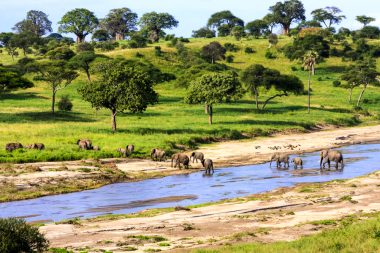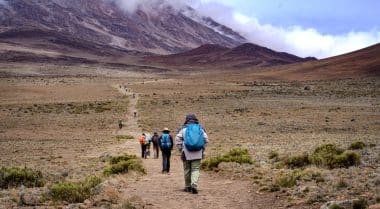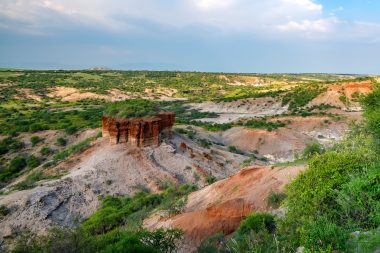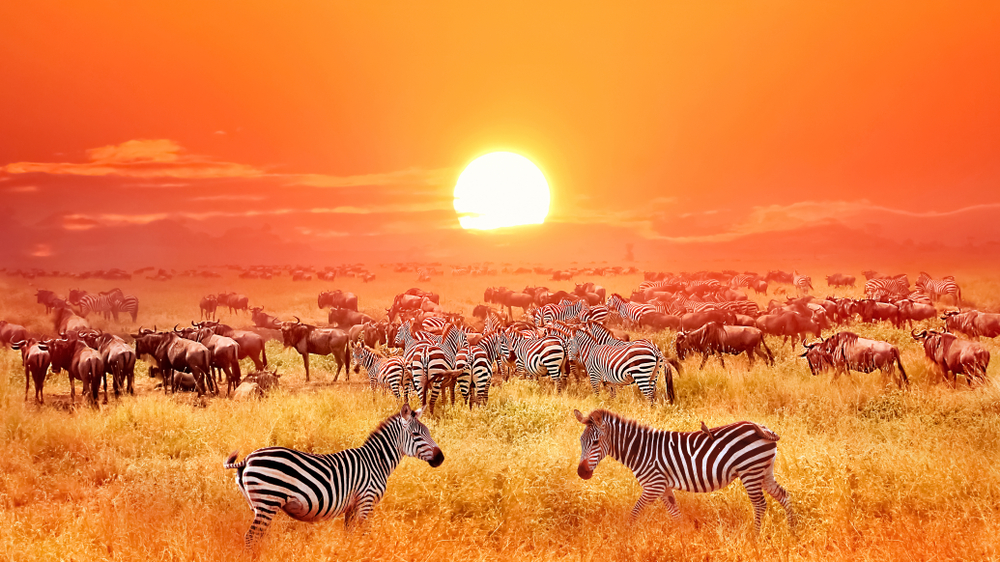Tanzania, the state in East Africa that became independent from the mandated power Great Britain in 1961, is the fifth largest country on the African continent. Climate and vegetation are tropical, the state is nestled between the Indian Ocean, volcanoes and high alpine terrain. Kibo, the highest mountain in Africa at 5,895 meters, which belongs to the Kilimanjaro massif, is also located on the territory of Tanzania. In addition, the country has several national parks to offer where exotic animals can be observed. We have presented the most worthwhile sights and corners of the country for your holiday in Tanzania here.
The Serengeti National Park

At the latest since its release, and the film “Serengeti must not die“, which won the Oscar for best documentary in 1960, the Serengeti National Park in Germany has been on everyone’s lips. Michael and Bernhard Grzimek, who shot the film between 1957 and 1959 at the invitation of the National Park Administration, portray the extremely exciting animal migration in the National Park in the film.
It still attracts visitors from all over the world who don’t want to miss the spectacle when countless wildebeests, more than 200,000 zebras and over 300,000 Thomson’s gazelles pass through the national park. The animal migration can be observed all year round, as the herds always move a little further in the course of the year after staying in one place for one to two months. Dusty savannahs and wildly overgrown plains are roamed, there are fabulously beautiful wildflowers and tropical trees to marvel at. In addition, guided game drives are offered, on which lions, giraffes and elephant groups as well as buffalo herds are approached. Anyone who has ever watched a pride of lions having lunch will certainly not forget it in a hurry.
Trekking on Kilimanjaro

Since 1987, the Kilimanjaro massif, located in the northeast of the country, has been a World Heritage Site. In 1973, the Kilimanjaro National Park was founded. Kibo is one of the relatively easy five-thousanders to climb, as the mountain presents relatively few technical difficulties.
Nevertheless, the ascent should not be taken lightly, as trekkers should still beware of altitude sickness. On the way to the summit you pass several vegetation levels, from jungle-like rainforest to firn and snow fields. The views of the surrounding plains are unique. In any case, a guided trekking tour is recommended for the ascent, which takes visitors slowly and over several stages to the summit. There are routes with different levels of difficulty on offer. If you are not quite so ambitious, you can also hike only parts of the route. Below the tree line, which is at an altitude of about 3,500 metres, you can admire magnificent plants such as orchids, acacias, cedars and junipers as well as ferns and lianas. The fauna on Kilimanjaro is also very diverse. It is quite possible that hikers will encounter monkeys, leopards, zebras or buffaloes.
Dream beaches and culture on the Zanzibar archipelago
If you love the sea more than the mountains, you will feel like you are in paradise on the islands of the Zanzibar archipelago. The archipelago is located 30 kilometers off the coast of Tanzania in the Indian Ocean and attracts divers with enchanting coral reefs. Many beaches of the archipelago are populated by sea turtles, which have their breeding grounds there. Bottlenose dolphins and humpback dolphins are also native to the area and can be experienced on dolphin safaris.
And sightseeing is not neglected on the islands either. On the main island of Zanzibar , the island’s capital, Zanzibar City, attracts visitors with colonial architecture. Worth seeing is the residential palace of the former sultan of the island, which now serves as a museum. The Arab Fort, which was built between 1698 and 1701, now serves as a cultural venue with its amphitheater. Over time, the Arab Fort changed its purpose again and again and was used as a prison, market place and even as a tennis court for some years.
Visits to the Central Market and the Forodhani Gardens are also worthwhile. While fish, spices and exotic fruits and vegetables can be admired in their raw state at the Central Market, visitors often overlook their eyes when strolling through the Forodhani Gardens: because this is Zanzibar’s nightlife mile, where exotic dishes are prepared in cooking and grill kitchens. Zanzibar, by the way, bears the nickname Spice Island, and that’s no coincidence. The climatic conditions allow vanilla, cloves or nutmeg to thrive. All spice lovers are therefore recommended to take a spice tour to the cultivation areas of the aroma carriers.
The Olduvai Gorge

Visitors interested in archaeology should definitely visit the Olduvai Gorge. Together with the Afar Triangle in Ethiopia and some archaeological sites in the South African province of Gauteng, the Olduvai Gorge is considered the cradle of humanity. Here, in northern Tanzania, numerous Pleistocene fossils have been found, which belong to the early relatives of anatomically modern humans. In addition, the gorge is the namesake for the Oldowan culture. The oldest known Stone Age tools of mankind originate from it. The gorge has a length of about 50 kilometers and is 100 meters deep. It can be hiked through today. If you are lucky, you will meet excavation teams that continue to explore the Olduvai Gorge.


